This is the second and last part of this AAR.
As you may remember, this was the situation the morning of the October the 17th :
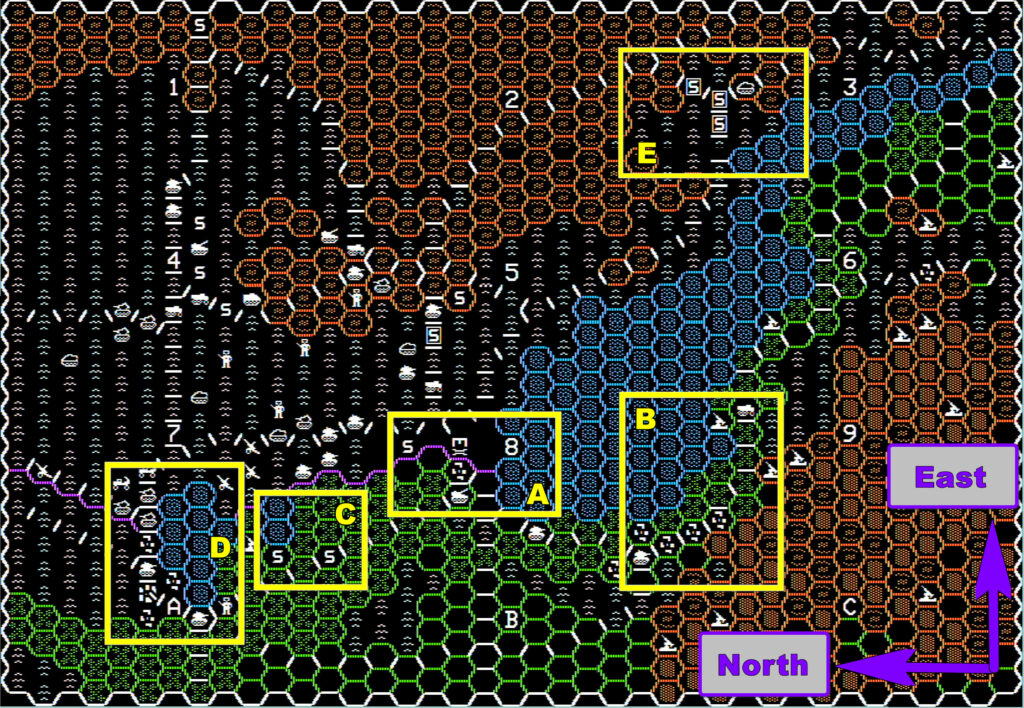
My troops had crossed Suez through A, and from there some started pouring South (B). But my tanks that had crossed at the bridge in D were now bottled up and unable to leave through the same route, so some of my forces were now moving to help them (C). Meanwhile, a massive Egyptian force was arriving on my back (E).
In a nutshell, my short term objectives are to free my tanks in D, and do something about the force coming in E. My long term objective is to cross with more troops and to destroy as many SAM sites as possible.
Turn #10 – 17th of October, 6 AM to 9 AM – Pillars of fire and smoke
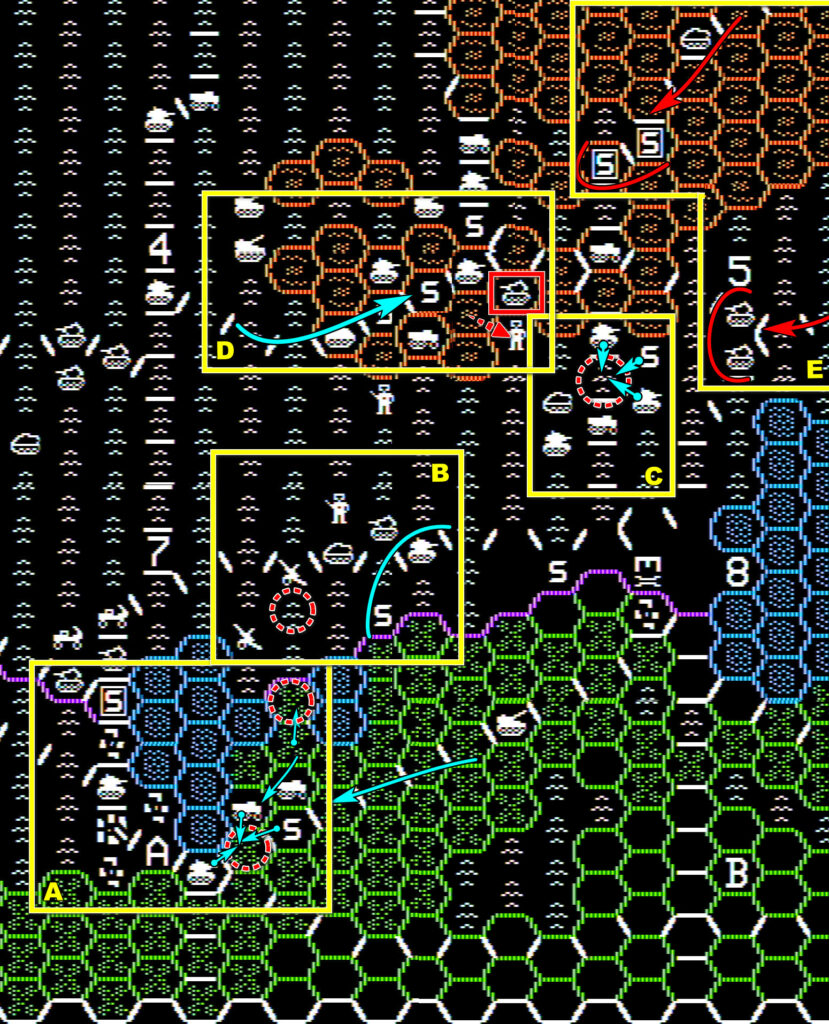
West of the Suez canal, my attempt to free my tank comrades in A starts poorly : one of my motorized units falls victim to an artillery ambush !
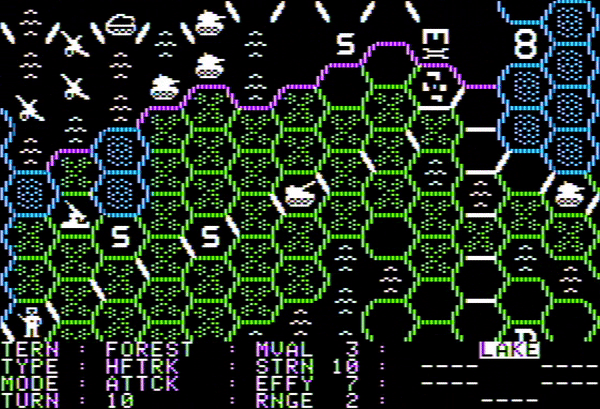
In Southern Command, you can give your units a delayed order to move or to shoot, with a trigger condition (which must be “an enemy unit occupies this hexagon“). These delayed orders can be devastating, since if the target is attacking, said attack will be solved AFTER the delayed order/attack. In this case, my motorized infantry barely survives… but it does, so I will be able to reorganize it.
Don’t tell my men, but that unit was kind of expendable. I have 3 more units and some artillery for support, and that’s enough to finish off the SAM site and destroy that infantry blocking the exit route !
Some Egyptian artillery is killed in B : unlike most other units, artillery cannot shift to defensive mode, so they can be brought to 0 strength with ranged attacks and, in this case, airstrikes. Airstrikes are powerful, because there is no more Egyptian SAM site North of the map !
Finally, two Egyptian infantry battalions that had been trapped on the road in C are destroyed while I also almost clear the North-South road in D, with only one Egyptian tank battalion still on the way. This allows me to start transferring massive forces from the North to prepare for the Egyptian reinforcements now arriving in E !
Finally, a new front is about to open in the South, where new enemy reinforcements (3 APC and one artillery) are on their way, but I don’t really care because I have enough SAM sites around to enjoy myself before they arrive.
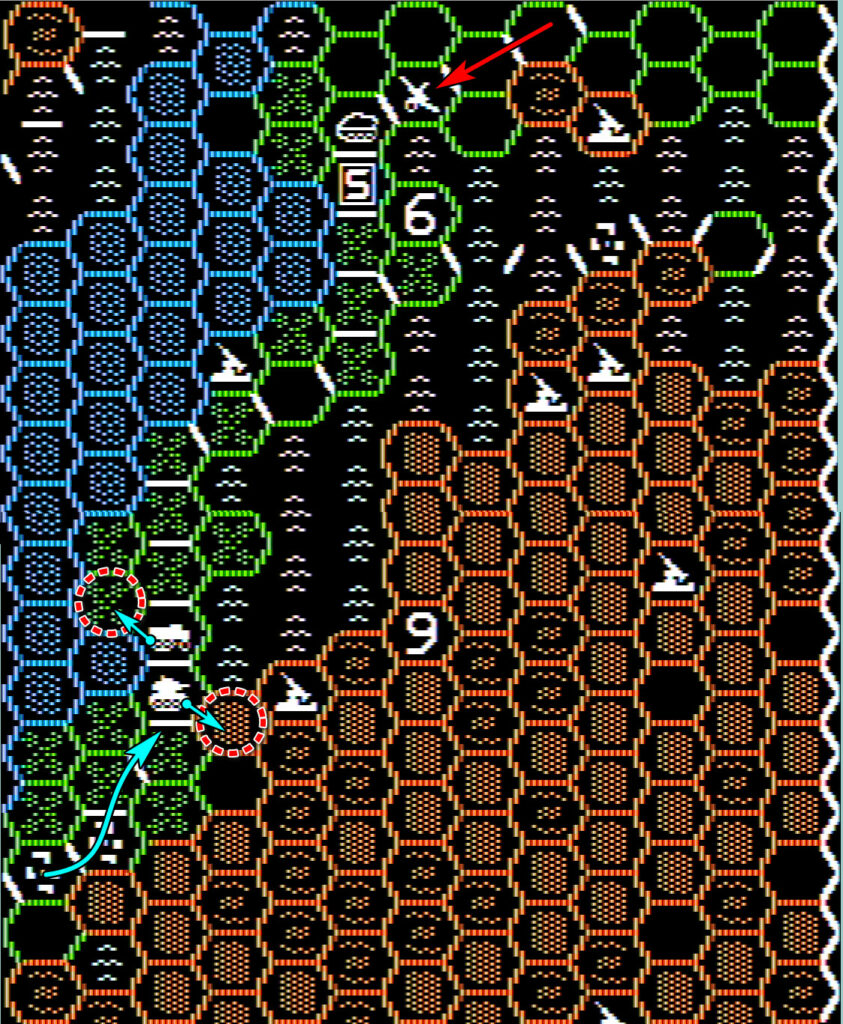
Turn #11-#12 – 17th of October, 9 AM to 3 PM – Mutual punishment
So, back to where most of the action is :
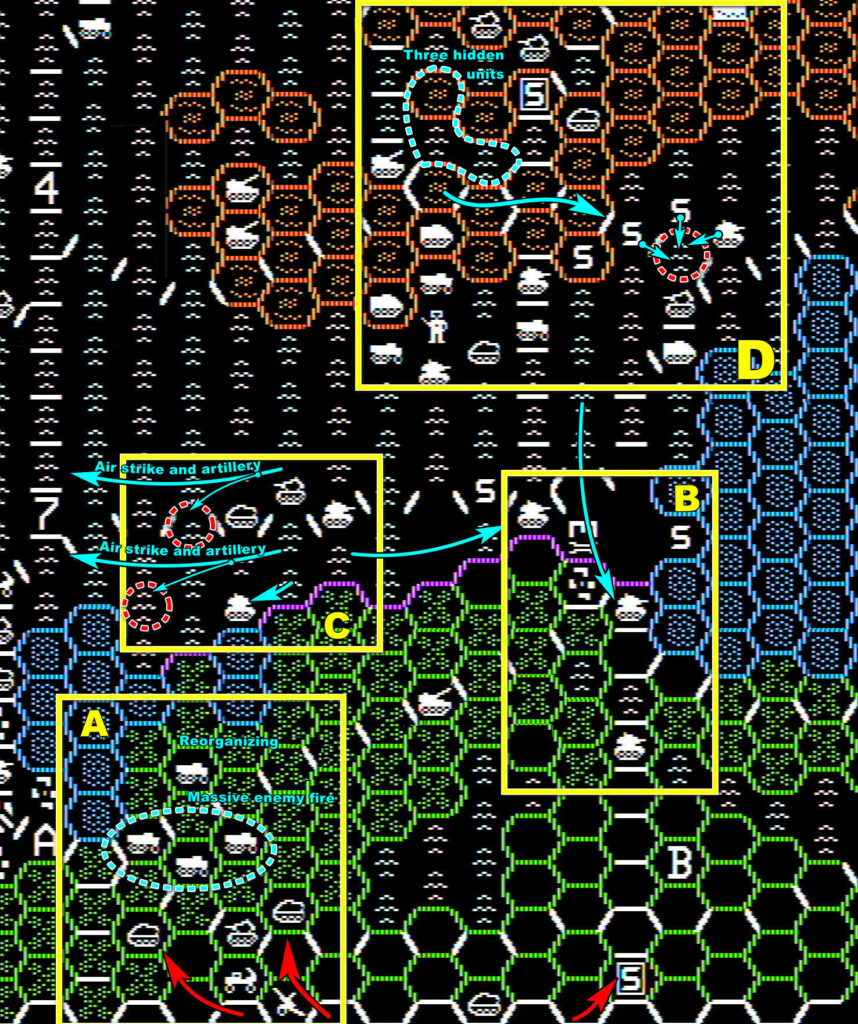
Just as I thought I had the situation well-in hands, the Egyptians received massive reinforcements from the West in A. My motorized infantry are battered hard – they all switch to defense position. I barely manage to spread them out so they are not at risk of being individually surrounded. Well, that’s not good but help is coming from B, so there’s that.
Some my reinforcements were transferred from C, where I destroyed the rest of the Egyptian artillery : you only need one battalion to pinpoint to your artillery and air force targets by being 2 hexagons away from the enemy ! Life is so much easier without SAM !
As for D, the Egyptians being nice enough to split in two groups, I focus everything I have on the smaller one, while waiting for the other in ambush with hidden units…
… and what do you know, it works !
The Egyptians advance their tanks and surprise surprise find a good chunk of my army , well, I guess hidden behind a rock. As per the rules of the game, it has to attack the 3 of them. With -4 row shift for each.
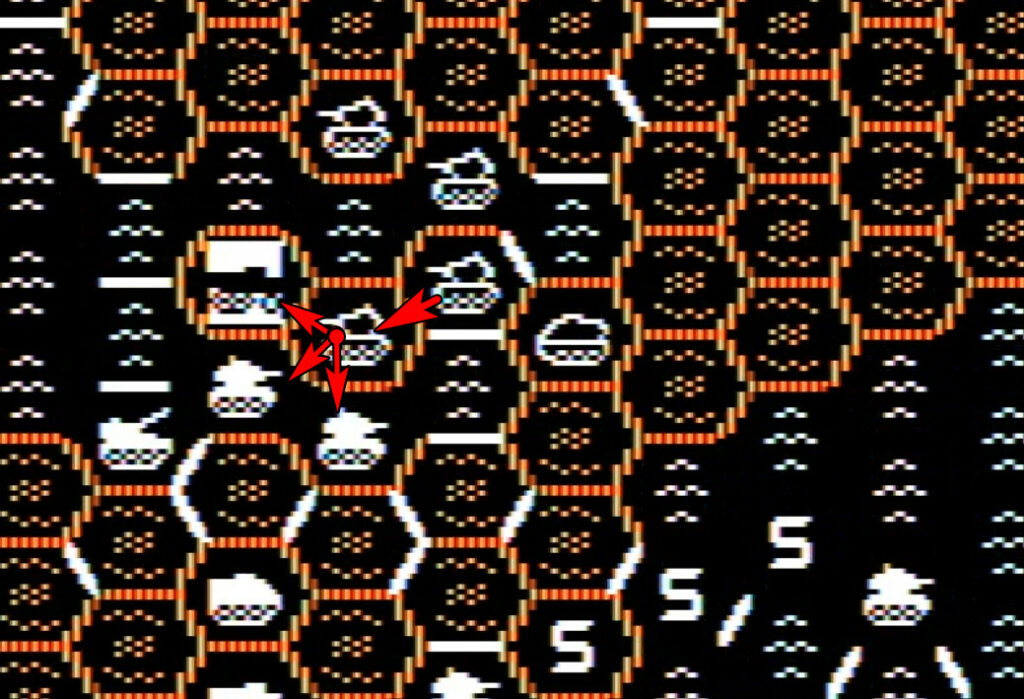
It survived, but is so depleted a gust of wind would destroy it, provided I can stop it from retreating.
Turn #13-#14 – 17th of October, 3 PM to midnight – Egyptians generals hate him !
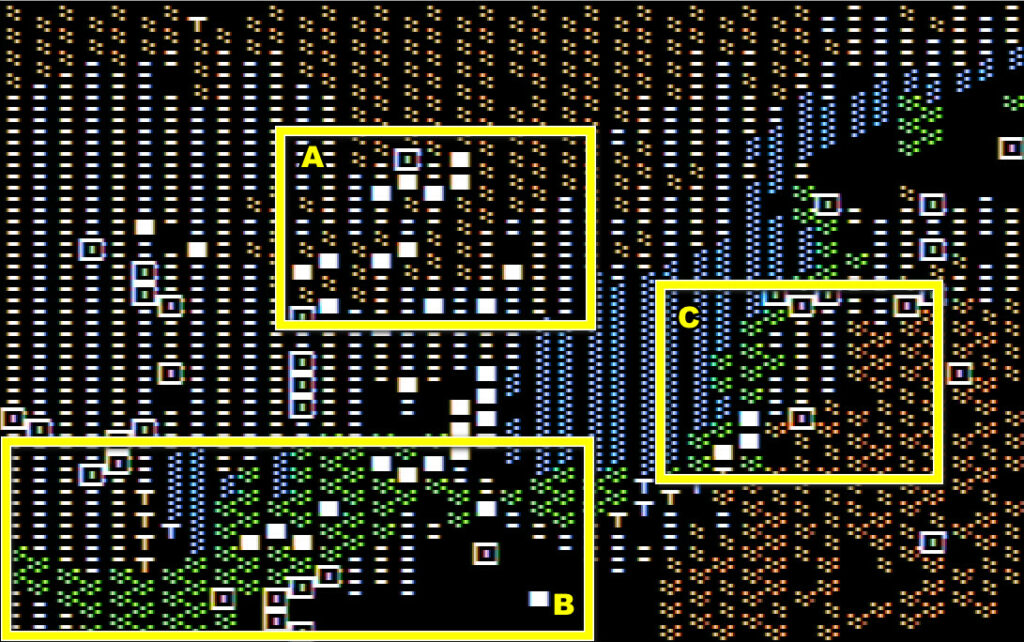
In A, it is time to reduce the remaining Egyptian tanks to cinders.
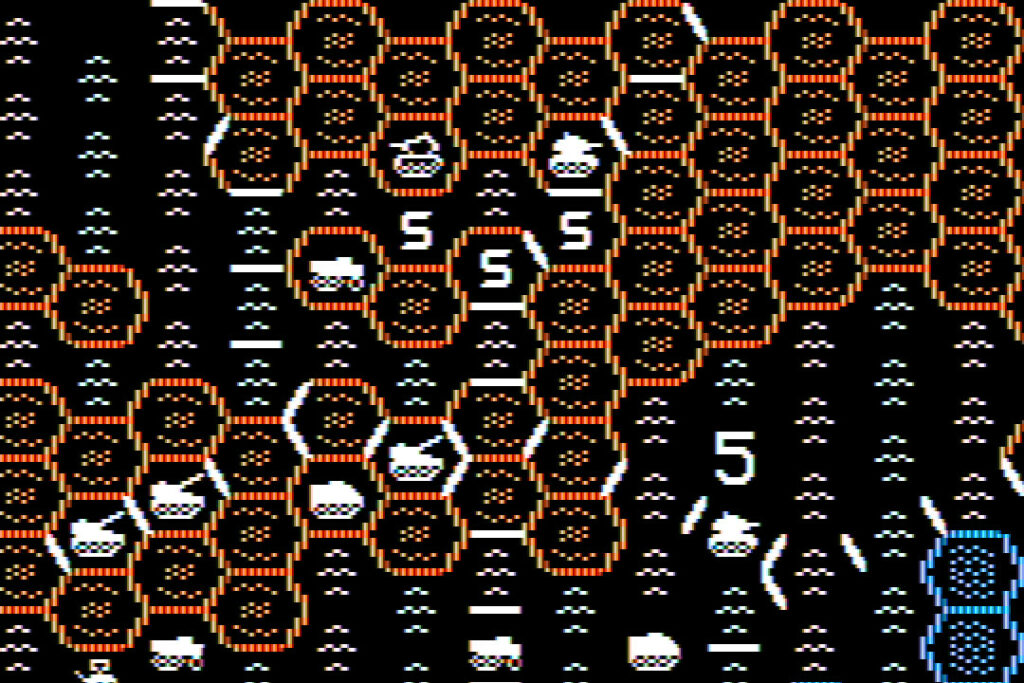
Most of the destruction happens in one turn, one image describing better than words :
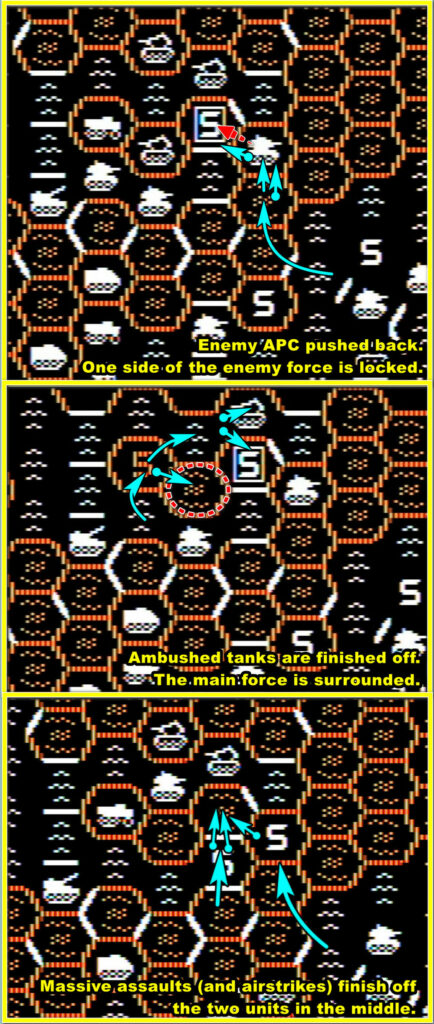
By midnight, it was the final mop-up already. The East of Suez looks safe, and we will soon be back to the pre-war borders.
East of the Canal, in C, I am crossing with more tank – I have spare ones at this point. These come just at the right moment : the Egyptians are crossing the Ismaili Bridge and I am at risk of being isolated given the strength of the enemy reinforcements. I organize a general withdrawal of all my positions in the North-West.
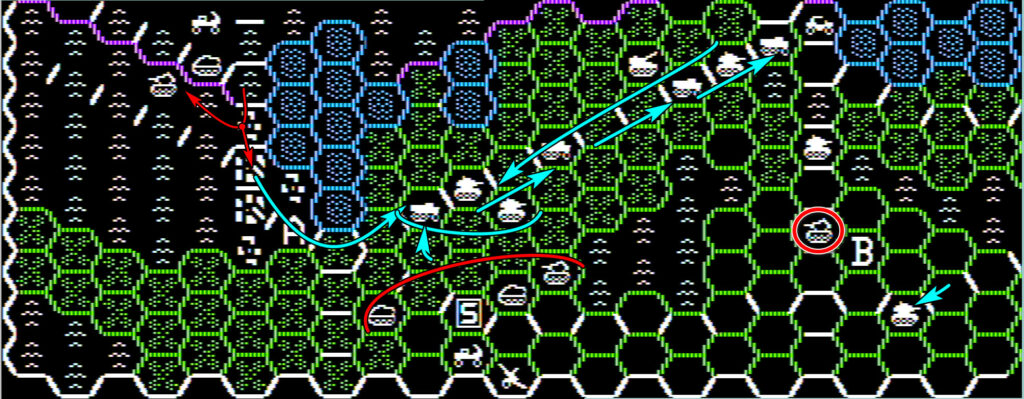
Finally, a quick note about what happens in the South-East (D). Long story short, I am still hunting SAM sites and refuse to play ball with the Egyptians.
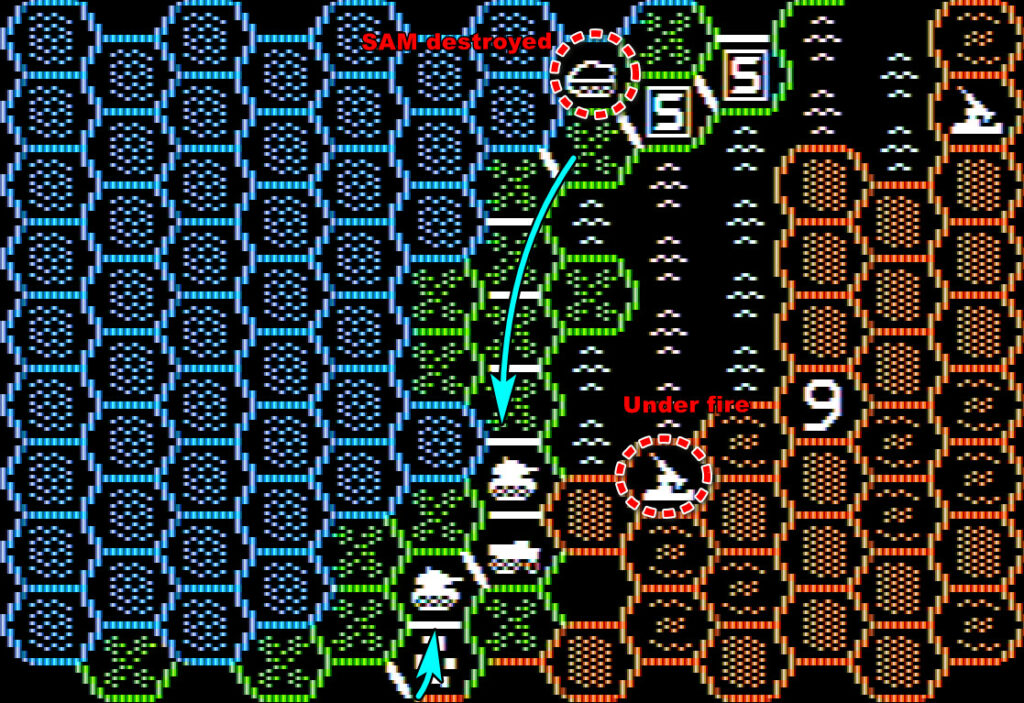
Turn #15-#16 – 17th of October, midnight to 18th of October, 9 AM
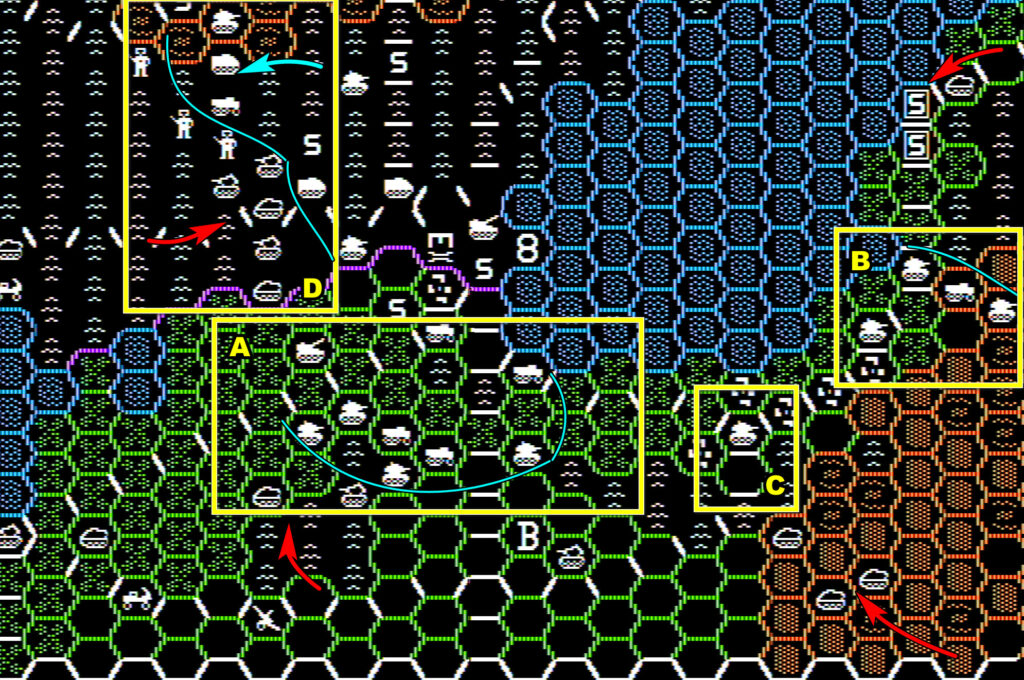
By the 18th, all those tactical withdrawals moved my Western frontvery close to the bridgehead. In A, I am defending a smaller position, but with a greater number of troops as I crossed the canal with yet more tanks. I also reinforced a bit my force in B. My weakness is the cross-road in C, only protected by one tank battalion at the moment.
The Egyptians are getting a lot more agressive, coming hard on the West side of the canal but also – surprise – East of the canal. But their offensive in the East, in D, lacks artillery support. I cede them a bit of land, but only because I am preparing to surround them by even further East !
Overall, the situation is great . I crossed with the troops needed, destroyed 10 SAM sites so far, destroyed 24 other Egyptian units and did not lose anything.

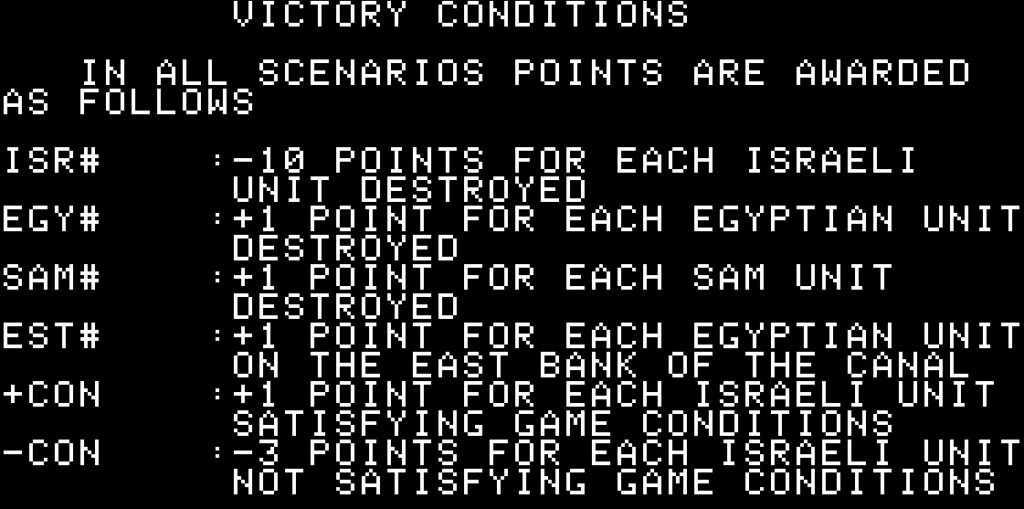
Hey, could I get my first decisive victory in a while ?
Turn #17-#18 – 18th of October, 9 AM to 3 PM – Waiting for victory
East of the Canal, I am about to encircle the aforementioned very large Egyptian force in B, which should lock that decisive victory for me :
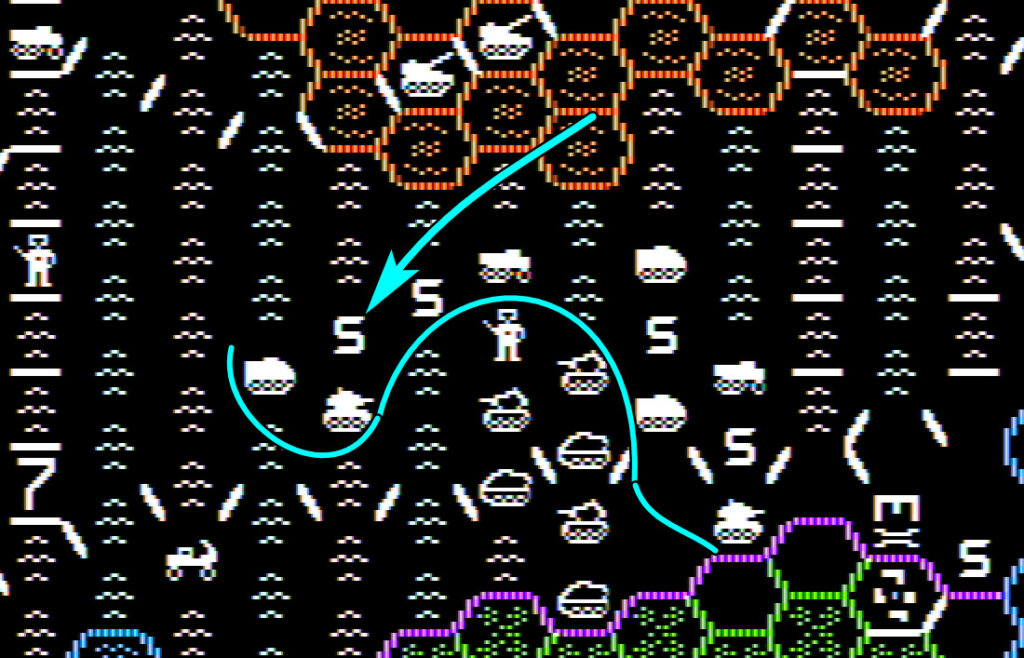
I feel more pressure West of the Canal, but so far so good, and I am playing safe and defensive.
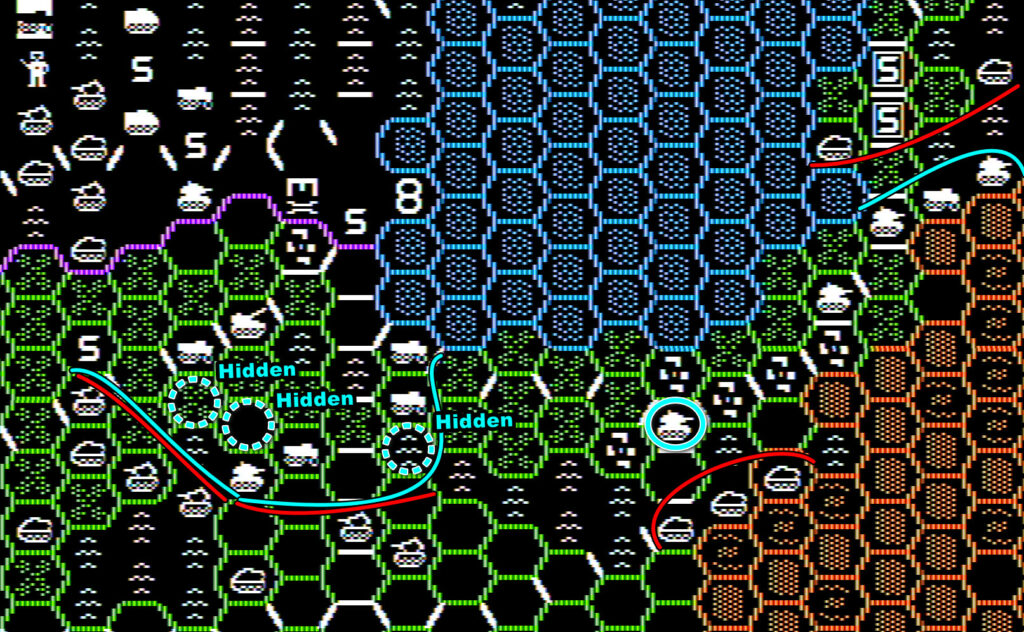
I am under extremely intense ranged fire, with the enemy all around me. As I see it, this game is basically over. Two more turns, and then I can bask in the glory of beating this game, on the first try, with a decisive victory ! It will be my revenge on being pushed back to the sea in Operation Apocalypse !
Turn #19-#20 18th of October, 3 PM to midnight- Egypt’s revenge !
Catastrophe ! As I was closing the trap East of Suez, the Egyptians had prepared a delayed move. My first tank unit, almost at full strength, thought it was going to fight 2 units at the same time, which would have been bad, but acceptable. Sadly, the enemy had anticipated such a move ! My tank movement is interrupted by one artillery attack, and then a counter-attack forcing it to fight four Egyptian units at the same time ( at -8 column shifts… four times). It is instantly destroyed !
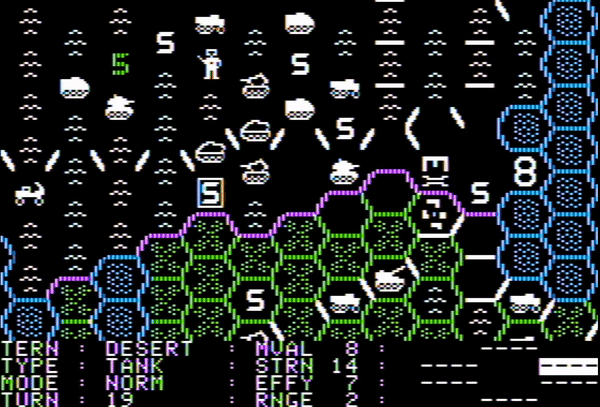
The only silver lining is that this delayed moved put the Egyptians in an even worse position to resist the rest of my onslaught. Of the 7 Egyptian units in the pocket, only 3 survive by 6 PM :
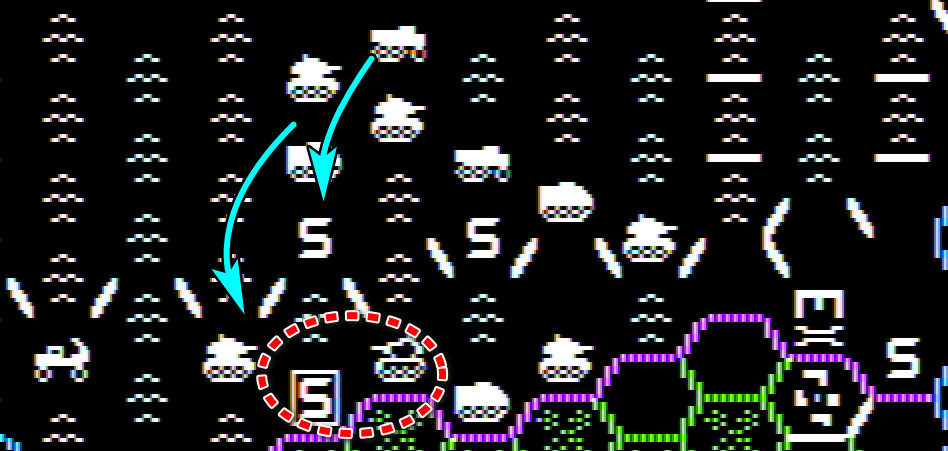
I am still on track for decisive victory, but barely. I could use some extra point. One Egyptian unit seems exposed in the South, so I try to make a move there.
Terrible mistake, my attempt to destroy some puny APC is met by a similar delayed move !
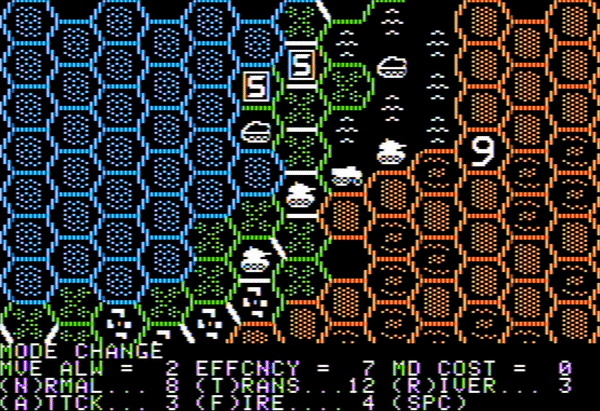
The tank battalion was already damaged, and it is destroyed – and there is no silver lining to that this time !
This makes me cautious. I hide as many troops as possible, and don’t take any risk :
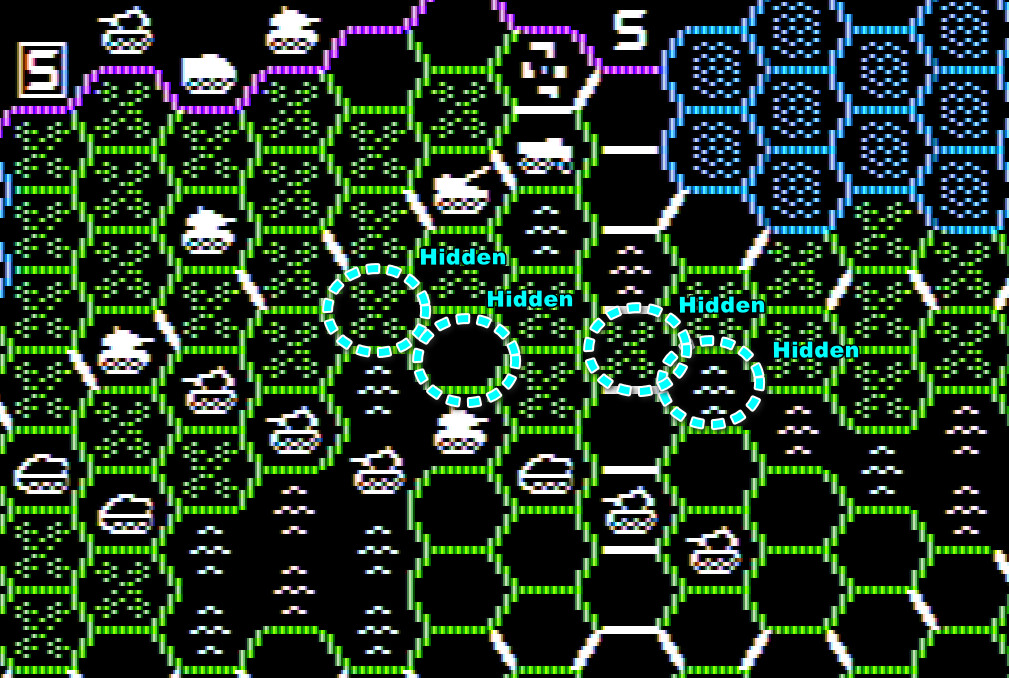
By the end of turn #19, I am 8 points away from decisive victory :

I calculate I need to obliterate 4 units on the Eastern side to win : 3 were already me on my naughty list – I need to find the last one somewhere. Doable.
But my hopes are crushed during the Egyptian turn. They are very aggressive, and destroy one of my tanks in the West !
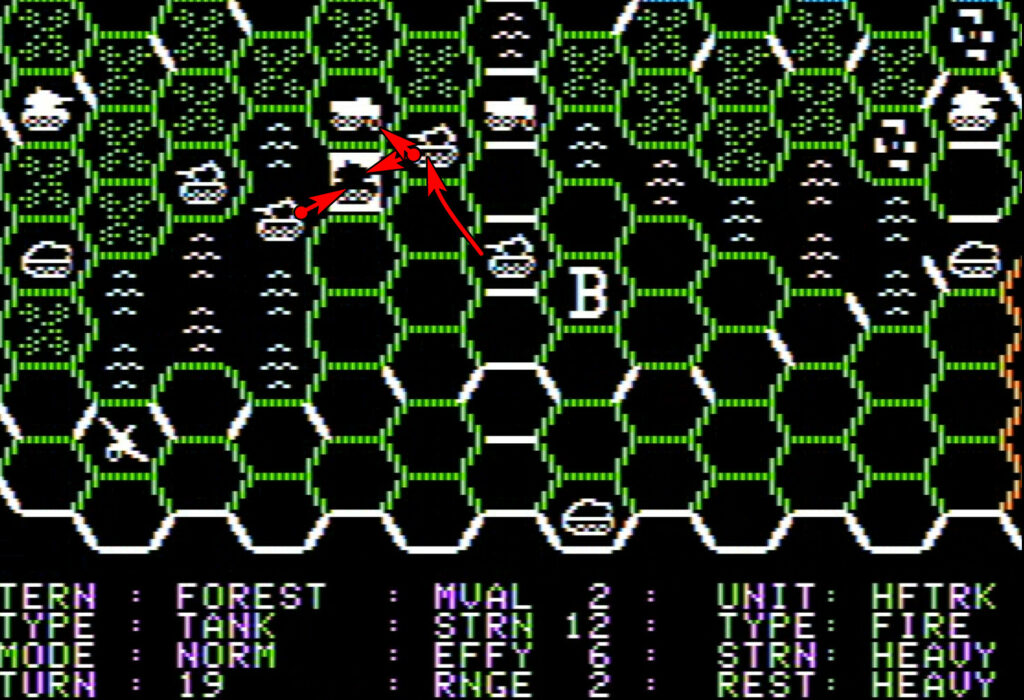
I am under all-out assault everywhere else West – it puts some of my tanks in a very difficult situation, but I survive !
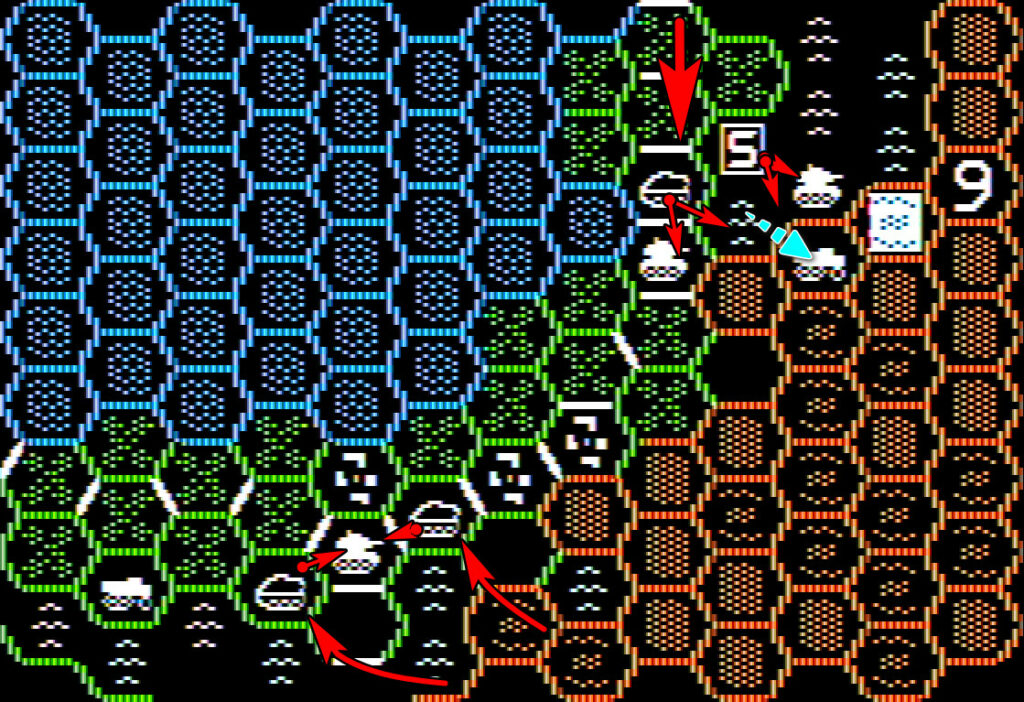
I don’t have much opportunities for the last turn, and I don’t want to take risks : decisive victory is out of grasp, but I am now close to being downgraded to an humiliating “marginal victory”. I content myself with destroying the last remnants of the offensive East of Suez :
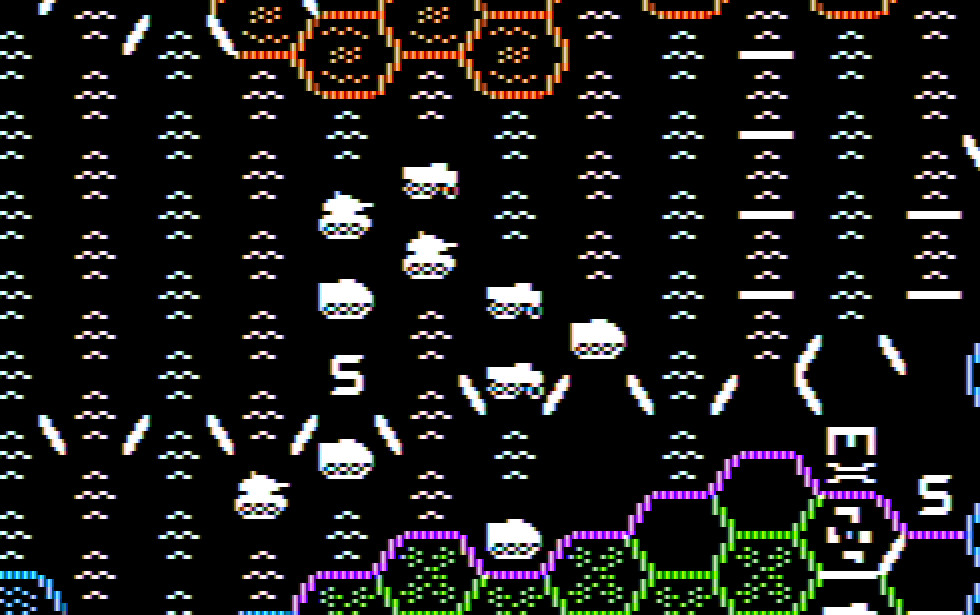
In addition to this, I free my threatened tank South-West of Suez, destroying one enemy APC this way :
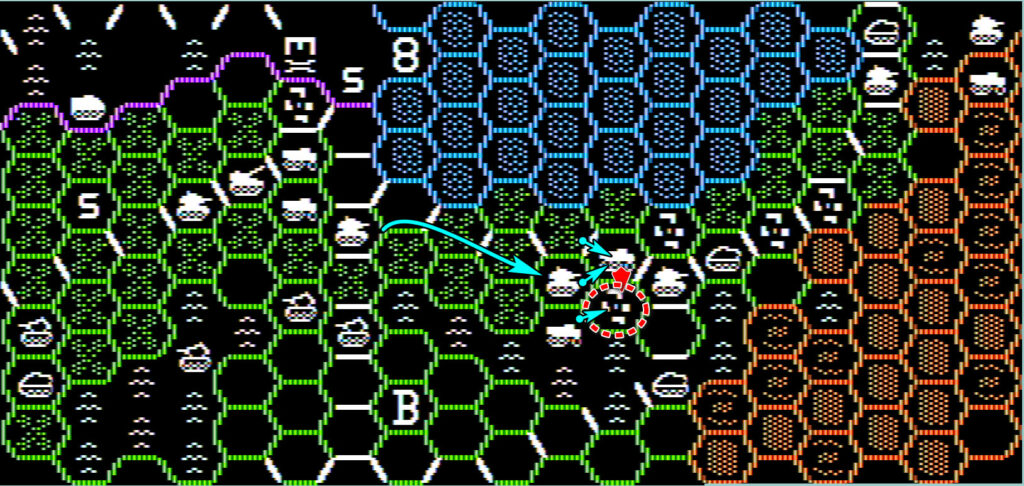
The Egyptians carry on their desperate offensive, but to no avail, and the game ends !
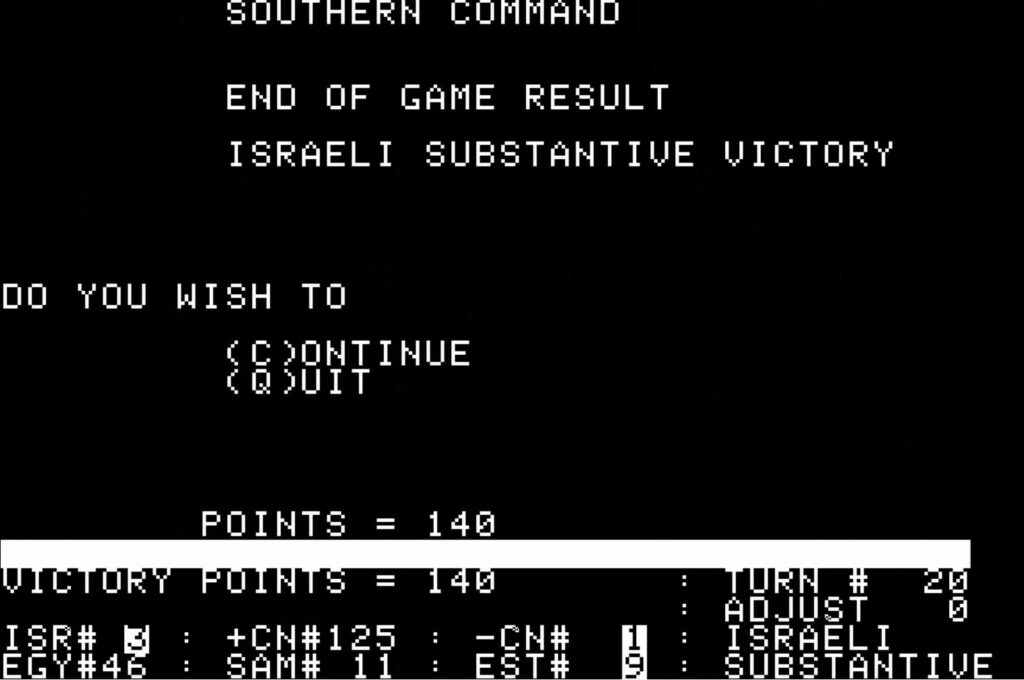
All had gone so well until the last few turns, and then the Egyptians decided to go on the offensive and registered some significant victories. To an extent, it is historical, at the last moment the Egyptians stopped the Israeli tide West of Suez and won the battle of Ismailia. This earned them a way better peace treaty than if they had been steamrolled fully, which possibly helped with the later long term resolution of their border conflict with Israel.
And of course, it also earned them a beautiful monument, courtesy of North Korea :
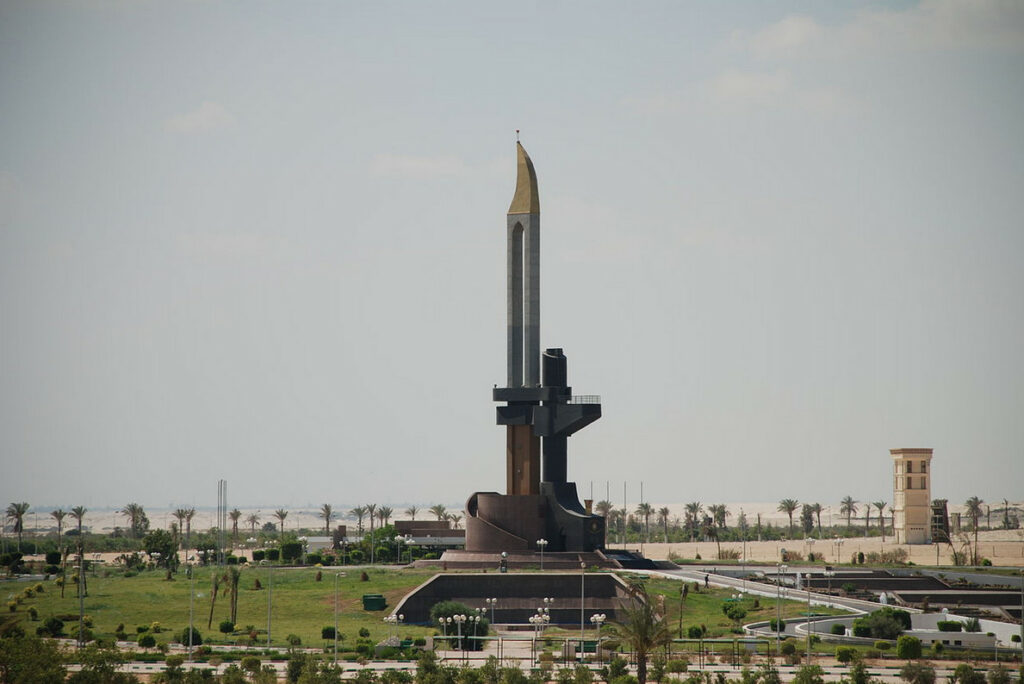
Final map :
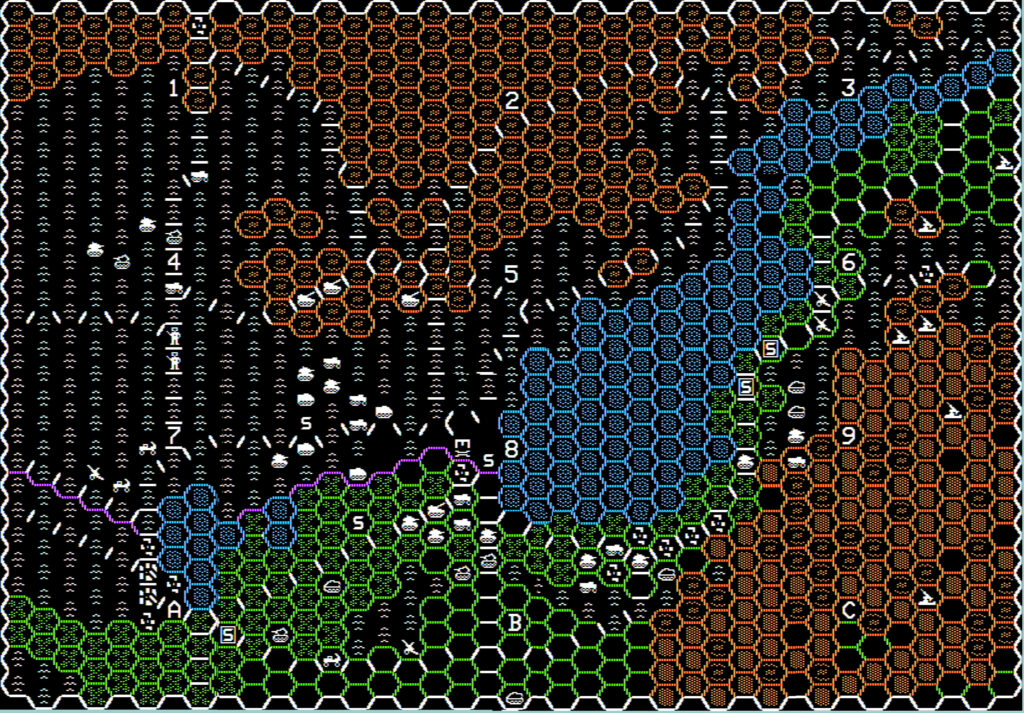
I updated the rating & review of Computer Conflict and Operation Apocalypse with additional bits of information received from Roger Keating. I used the opportunity to update the ratings to my new system.